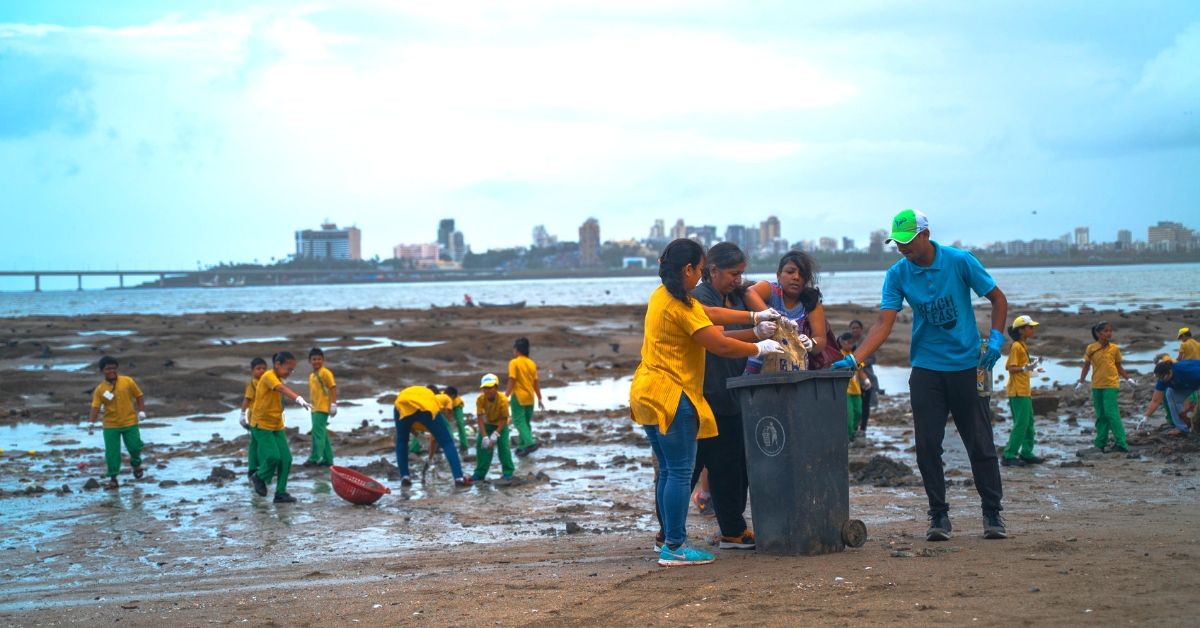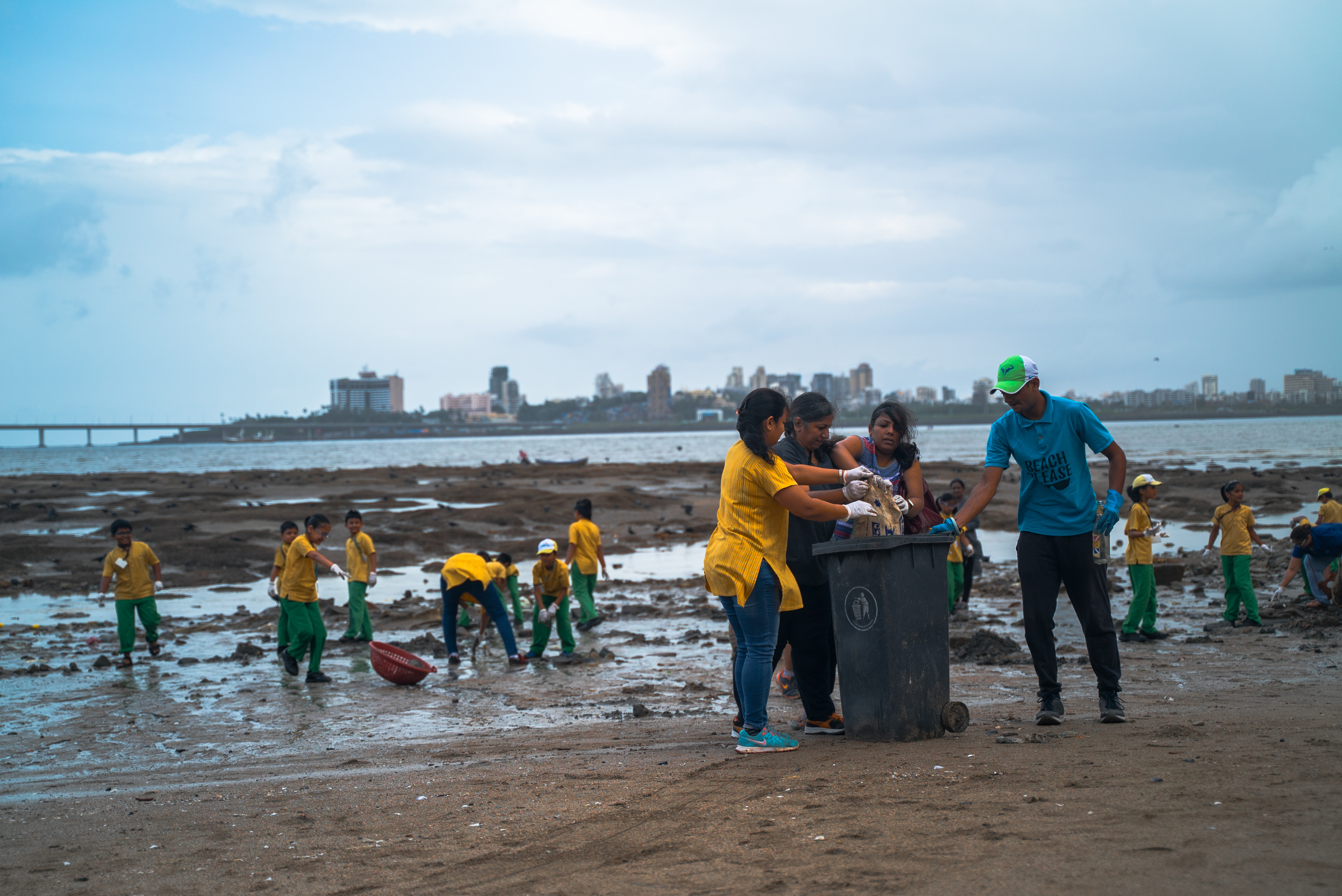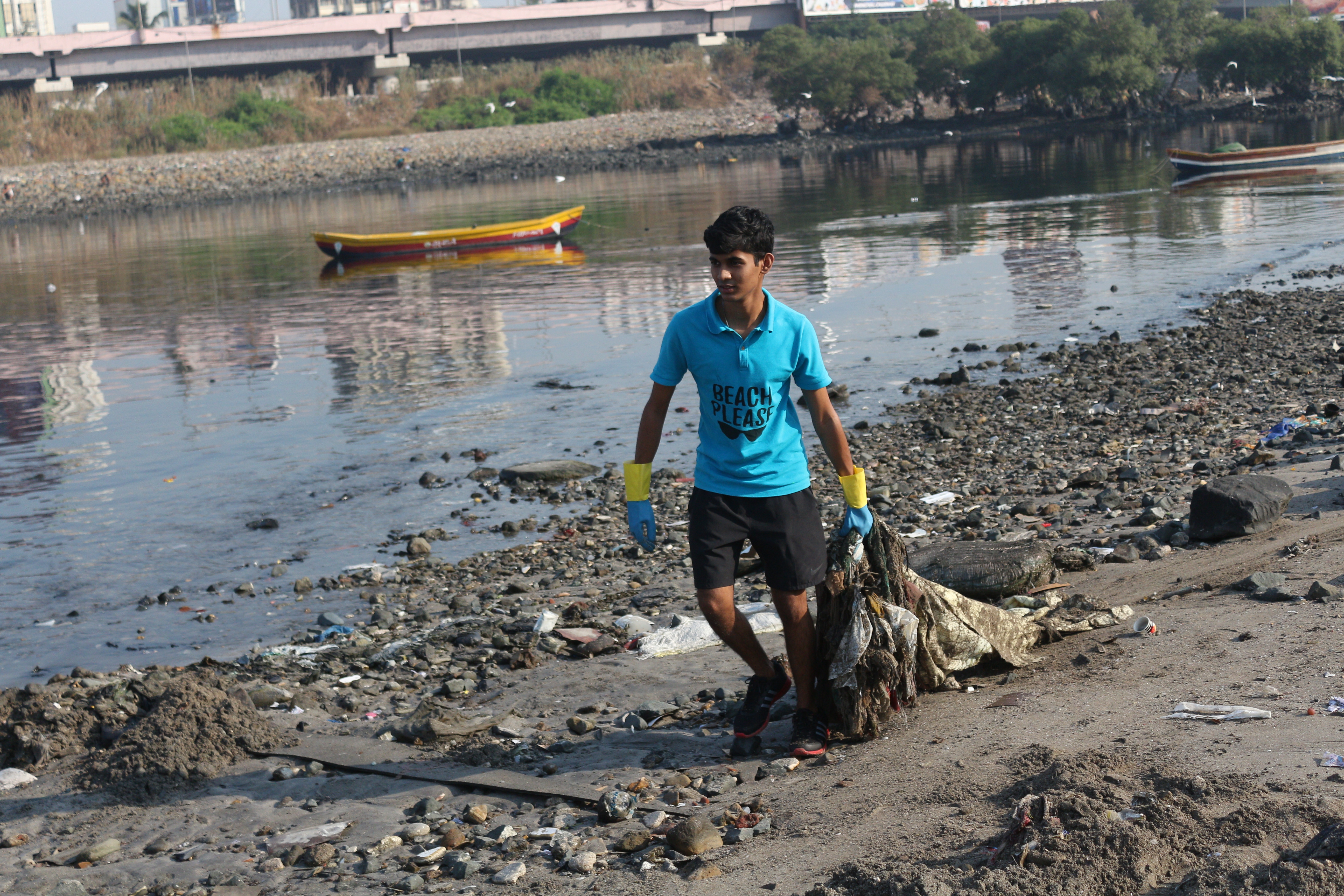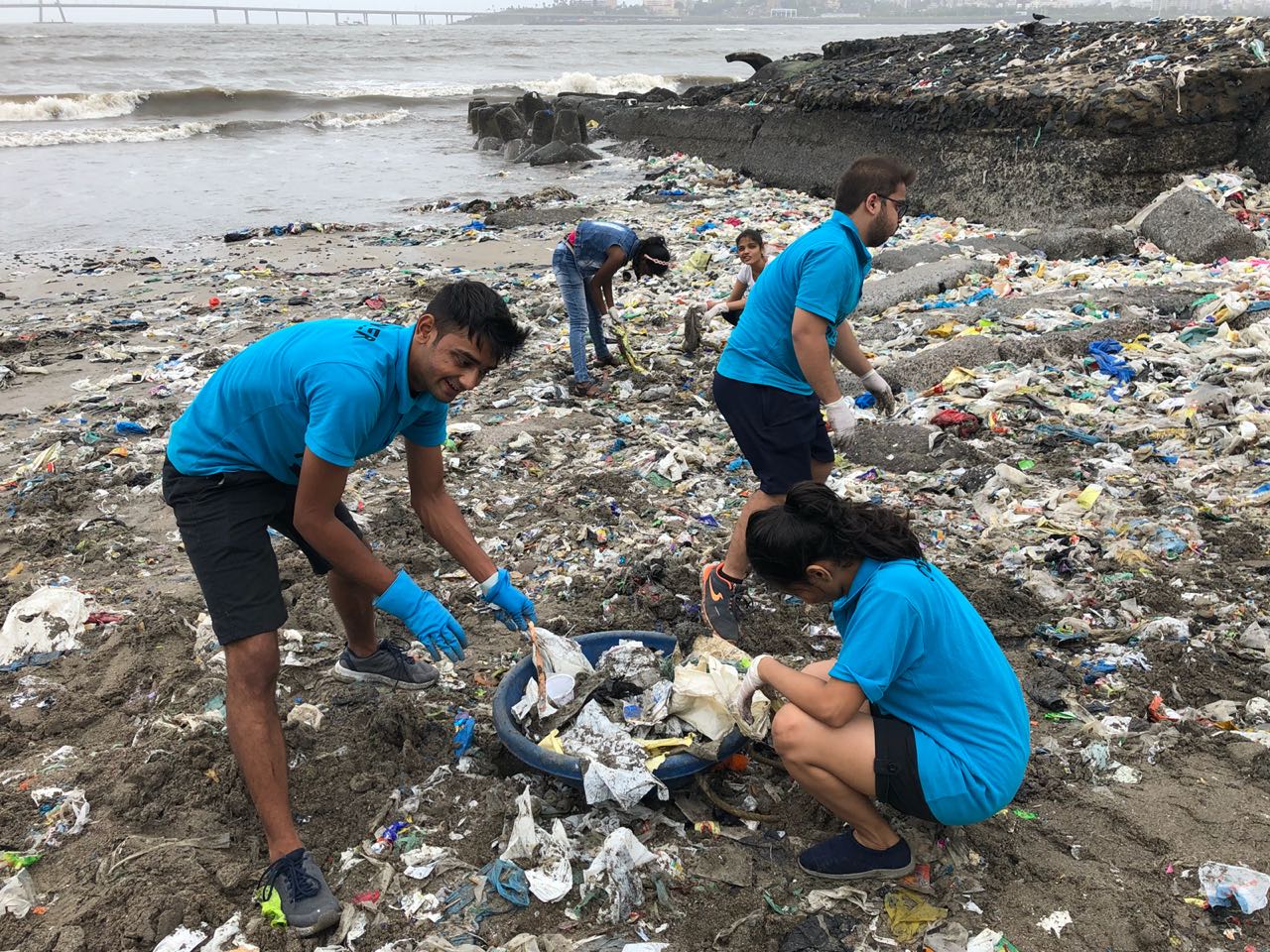How 5000 Citizens Came Together to Clean up Nearly 20 Tonnes of Mumbai’s Trash
On #WorldEnvironmentDay, Mumbai will once again come together in even greater numbers to clean its beaches, water bodies and mangroves. #LiveGreen #CleanIndia

On June 1 and 2, nearly 5,000 Mumbaikars came together to clean up almost 20 tonnes of trash from nine beachfronts, four rivers and different mangrove locations all the same time.
Although the Maximum City does have multiple volunteer groups engaged in cleaning domestic waste across these locations at their convenience, many of them have come together under the Jallosh-Clean Coasts initiative led by Project Mumbai, a non-profit.
This is the first-of-its-kind citywide initiative with participation from environment groups, citizen volunteers, state agencies, school and college students and corporations.
The initiative will come together today, on World Environment Day, to round off its three-day clean-up schedule, and is likely to witness high participation.

“Volunteers at Beach Please have been doing clean up work at Dadar Beach and Mithi River for the past two years now. On June 1 and 2, we had about 800 people joining us for the clean-up drive in these two locations. For the Mithi River, this was a particularly great turnout because the terrible stench in the area (due to open defecation, industrial effluents, waste from recycling plants based out of Dharavi, illegal sand mining and construction debris), often drives volunteers away,” says Malhar Kalambe, who started ‘Beach Please’ to make Dadar beach waste-free, speaking to The Better India.
Using gloves, facemasks, buckets and hand tools, volunteers with Beach Please have focussed on cleaning the river shore which has a lot of plastic.
Nearly six months ago, there was such a thick layer of plastic that one even couldn’t see the sand below. There have been some improvements since, but not enough with the monsoon coming up.
According to Malhar, single-use plastics like PET bottles, plastic carry bags make up nearly 90% of the waste picked up on a beachfront or a water body, and that’s what one finds on the Dadar Beach as well. The waste that comes to Dadar Beach is from the Mithi River.
While the organisation has found no support from the municipal corporation for cleaning up the Mithi River, it gave them a collection truck for waste collected from Dadar beach.
Meanwhile, other beach clean up crusaders like Afroz Shah took his team of more than 350 volunteers to clean up trash across other beach fronts using different waste removal equipment.

According to the Hindustan Times:
“The maximum amount of trash was removed from Dana Pani beach and Mithi River. A little over 7,000kg trash, mostly plastic, was removed from nine beach fronts – Dana Pani beach in Malad, Chimbai in Bandra, Versova, Juhu, Girgaum, Dadar, Mahim, Cuffe Parade, and Carter Road — and 8,000kg trash was removed from Mithi and Poisar rivers on Saturday and Sunday.”
On the Mithi River, however, it’s not only solid plastic waste but other sources of effluents as mentioned above. The water there is entirely black. All of this makes up the clean-up process extremely complicated.
“Beach Please began cleaning up in Mithi river in November 2018. Mumbai faces floods every year, and the Mithi River is largely responsible for it. As a result of the solid waste in the river, the drainage system gets choked up, and during monsoons, it floods up every year. By cleaning up the river, we are not only cleaning the environment but also preventing floods that may happen this year also,” says Malhar, to The Better India.
Besides water bodies and beach fronts, there are challenges in cleaning the city’s famed mangrove forests in Malad and Gorai as well.

“Removing plastic waste from mangroves was difficult as we were trying to maintain balance on sticky mudflats while pulling out plastic, which was stuck to tree roots. A joint effort of students and mangrove cell officials helped clear 120 kgs of trash across a stretch of 200m in Gorai,” said Moon Bhandari from Mangrove Foundation to the national daily.
Shishir mentions that Project Mumbai has been receiving incessant queries from people who missed the boat initially, but now want to know whether they can join this initiative.
“Ordinary citizens are actually stepping out, corporates want to sign up, and various departments are sending their officials to participate. This is not a one off event, and a sustainable collaborative initiative under Jallosh will continue, but it will not merely about beaches and plastics. Everybody cleans beaches because it’s easy to clean it up, but can we look at other water bodies and mangrove locations as well?” he asks
Also Read: 21-YO Mumbaikar Removes 1000+ Tonnes of Trash From Dadar Beach, Wins UN Award!
While it is indeed commendable that the initiative has united Mumbai’s residents, even if it is for three days, there are challenges aplenty for the city, which by most accounts has a poor waste management system.
Waste segregation at source is a concept that many locals haven’t taken seriously or don’t understand.

If every resident did take it seriously in practice, nearly half the city’s waste problems would get resolved, says Malhar.
He also believes that mass initiatives like Jallosh-Clean Coasts must happen more often in Mumbai.
“What we have learnt is that during our regular clean-up sessions, not many people turn up. We need to conduct big events with media coverage so that more people turn up. It’s about understanding the psychology of the volunteer and citizens,” he informs.
Also Read: 30 Years, 100+ Legal Battles: Meet The Couple Standing Against Ecological Damage in Goa
The idea is to innovate these clean-up events.
For example, last October, Beach Please conducted the Clean Coast Cup, a beach cleaning competition between the city’s different colleges. According to Malhar, on a single day, more than 1200 college students from 20 colleges participated in the event.

“Events like these motivate them. See, not everyone is crazy about the environment like us, so we try to incentivise the process. For the competition, we gave them cups medals and cash prizes. We are planning to do a second season of this competition. Logistics is difficult, but these events should happen once in three or four months. This requires constant media hype and attention, as well. However, what these regular events do is build consciousness among Mumbai residents,” says Malhar.
Raising mass consciousness is what eventually brings real change.
(Edited by Gayatri Mishra)
Like this story? Or have something to share? Write to us: [email protected], or connect with us on Facebook and Twitter.
If you found our stories insightful, informative, or even just enjoyable, we invite you to consider making a voluntary payment to support the work we do at The Better India. Your contribution helps us continue producing quality content that educates, inspires, and drives positive change.
Choose one of the payment options below for your contribution-
By paying for the stories you value, you directly contribute to sustaining our efforts focused on making a difference in the world. Together, let’s ensure that impactful stories continue to be told and shared, enriching lives and communities alike.
Thank you for your support. Here are some frequently asked questions you might find helpful to know why you are contributing?


This story made me
-
97
-
121
-
89
-
167













